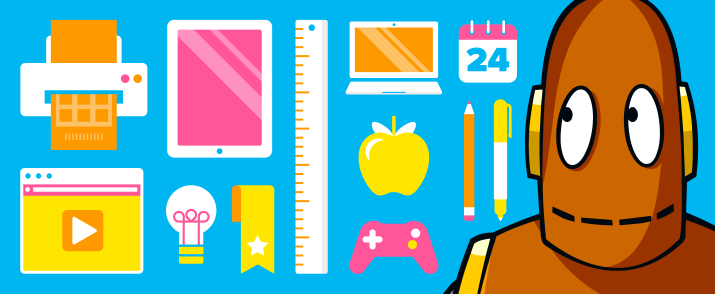Along this year we have analysed the
use of various technological tools for material designing and classroom work. Therefore, we would like to introduce you to blended learning which, as explained by Frederic Skrzypek, is the mixture of two models: online teaching and face to face
teaching.
There are four main blended learning models we can work with:
There are four main blended learning models we can work with:
- Lab rotation: students will move in and out of a classroom to a computer lab. The data from the content in the leanring lab informs the instruction in the classroom.
- Class rotation: students are divided into small groups which will move across different stations –one will be with the teacher, two of the other may include work with computers and another group can work on their own, integrating information for their project or practising.
- Flex: there are smaller rooms within the lab for students to work in groups and the teacher can intervene for a seminar or direct instruction.
- Pod: 'school within a school’. Each pod might have multiple grade levels. The role of the teacher is discrete (an adviser, a behaviour specialist, an instructor to support each pod).
These models are intended to give
students more control over their own learning and allow teachers to personalize
instructions and feedback since they can work with the small groups.
We have had the opportunity of working with blended learning as students at Brown Institute since many subjects integrate the use of virtual classrooms at the Institute’s Moodle platform. Some other subjects gave us the possibility of working with Edmodo and for other subjects we are part of Facebook groups. They are all different tools used to complement face to face teaching and learning at the institute. Teachers post there our assignments and homework so as to remind us of them but they also create forums (on Moodle) for us to debate and express our opinions on several topics related to the specifics of each subject. If we wish to express our opinion in Edmodo or Facebook, we can comment on a particular publication and respond to it. All in all, our experience using these tools have helped us remind our assignments, they have become a repository of the material used along the year and we regard them as good elements to mix with face to face teaching.
However, we would like to highlight again -as we have mentioned in older posts - that the inclusion of technology in the classroom needs to have a clear purpose and, ideally, it has to do more for our teaching than substituting pen and pencil work. According to the SAMR model, substitution is the lowest level of the hierarchy and we should aim for redefinition of our tasks. Therefore, it is of utmost importance to take into consideration the fact that we should always use these tools as complements and not as a replacement. That is to say, we should share digitally what we cannot show to our students in the classroom and the works we ask them to do should include ICTs only with a clear purpose, not just to make a simple work more complex. We believe that this is the best way to work with blended learning and that it should help our students in their learning process.
We have had the opportunity of working with blended learning as students at Brown Institute since many subjects integrate the use of virtual classrooms at the Institute’s Moodle platform. Some other subjects gave us the possibility of working with Edmodo and for other subjects we are part of Facebook groups. They are all different tools used to complement face to face teaching and learning at the institute. Teachers post there our assignments and homework so as to remind us of them but they also create forums (on Moodle) for us to debate and express our opinions on several topics related to the specifics of each subject. If we wish to express our opinion in Edmodo or Facebook, we can comment on a particular publication and respond to it. All in all, our experience using these tools have helped us remind our assignments, they have become a repository of the material used along the year and we regard them as good elements to mix with face to face teaching.
However, we would like to highlight again -as we have mentioned in older posts - that the inclusion of technology in the classroom needs to have a clear purpose and, ideally, it has to do more for our teaching than substituting pen and pencil work. According to the SAMR model, substitution is the lowest level of the hierarchy and we should aim for redefinition of our tasks. Therefore, it is of utmost importance to take into consideration the fact that we should always use these tools as complements and not as a replacement. That is to say, we should share digitally what we cannot show to our students in the classroom and the works we ask them to do should include ICTs only with a clear purpose, not just to make a simple work more complex. We believe that this is the best way to work with blended learning and that it should help our students in their learning process.
Sources:
Further reading:


